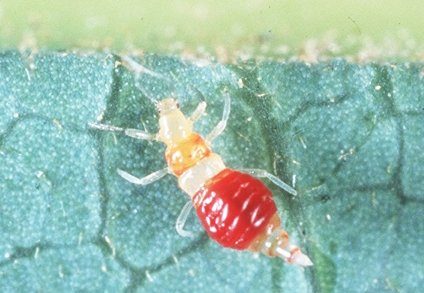Contrary to the op-ed “Farming Is Fundamental,” in fact, the growing cannabis industry is threatening county agriculture – real agriculture – food agriculture
First, a quick matter of terminology: according to the State of California, cannabis is not an agricultural crop; it is a product. It is not covered by the Right to Farm law which protects food farmers. Cannabis is a product people use for health or to get high, both of which I totally support.
I am a real farmer – a food farmer. I grow 13 acres of organic avocados in Carpinteria and rent 40 acres in the Santa Ynez Valley to an organic vegetable grower. I too love the land and the miracle of growing and other nice things about farming. I agree that Santa Barbara County “is what it is today thanks to agriculture.” Well, agriculture and a beautiful coast, and magnificent valleys, and a perfect climate, and a world class university. But, yes, ag has always been important. It is very important to me and other food growers and eaters of local food.
And now cannabis is making it harder to grow food here.
I grow avocados organically. Avocados are subject to two pests: thrips and mites. If avocado growers don’t kill these insects in spring when the new fruit sets, the new fruit and leaves will fall off and the fruit that survives will be scarred, lowering production and value, and ultimately putting the farmer out of business. Fortunately, there is a pesticide, certified for use on organic crops, that is sprayed on thousands of acres of avocado orchards to control populations of these pests.
This year, the local ag company that has sprayed our orchard for thrip and mites every spring for the last 20 years, has informed us they will not spray because of the presence of marijuana grows nearby. All three state-licensed companies that spray in Carpinteria won’t spray either conventional or organic pest control products on avocados for fear of being sued by marijuana growers. We need to spray the certified organic product but we can’t because there is no one licensed and insured to spray it.
Supervisor Williams is trying to work out a deal to let Carp Valley avocado farmers spray. He’s contacted the marijuana growers group in Carp to see if they will agree to not sue avocado farmers and applicators if they are notified when spraying will occur, if the ag commissioner has monitors present, and if only organic spray is used.
I enormously appreciate his efforts.
One of the pesticide applicators said he was hopeful but won’t spray any property unless all marijuana growers in the vicinity sign a waiver of all claims against the avocado farmers and pest appliers. Who will draft this agreement? Will it be binding? Will all marijuana growers sign? Will it go into effect before the thrip and mite populations get so bad that we lose our crop?
This effort, admirable as it is, doesn’t really resolve the issue for farmers outside Carpinteria. What about the row crop, grape, and walnut farmers in the Santa Ynez Valley surrounded by huge grows (some the size of 70 football fields) in open hoop houses or the farmers in Goleta or Santa Maria? Will we need a separate negotiation for each crop?
Some say the solution is having the state lower thresholds for pesticides on marijuana. I say, Absolutely not! The purpose of stringent testing is to protect the lungs of people who smoke marijuana. Trading healthy lungs for healthy food is a choice we shouldn’t even consider.
What we really need is an ordinance solution – not piecemeal negotiations. The current ordinance is deeply flawed. Anyone can put up a plastic structure and grow marijuana and no one knows if they have applied for a permit or not. By the way, you don’t need a permit to grow – just an application for one. The ordinance is based on an absurd affidavit program that created a massive loophole for anyone willing to say with no proof that they were growing medicinal marijuana in January 2016.
And it’s not just the affidavit problem, Santa Barbara County is the only coastal county (possibly only county in the state) that has no limits on how many acres per parcel can grow marijuana. Santa Barbara County has 49 percent of the state’s provisional cannabis permits, but one percent of the population and 2 percent of the land.
Napa County banned outdoor cannabis cultivation (defined as “any location that is not within a fully enclosed and secure structure”) including greenhouses and hoop houses to protect its agriculture, its sensitive environment, its citizens, and its visitors.
Oh Santa Barbara County, if only you cared half as much as Napa does.

